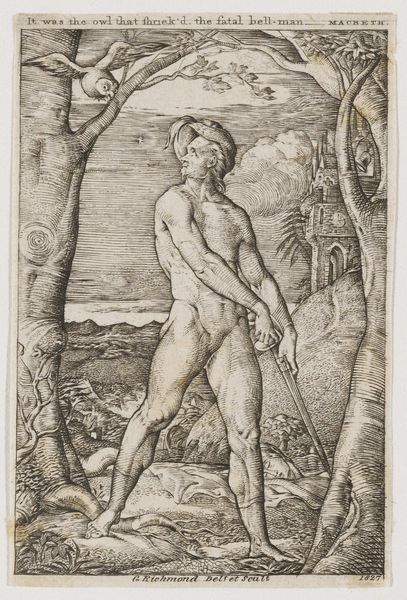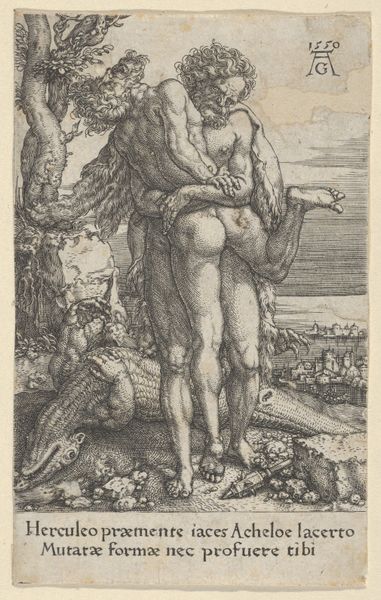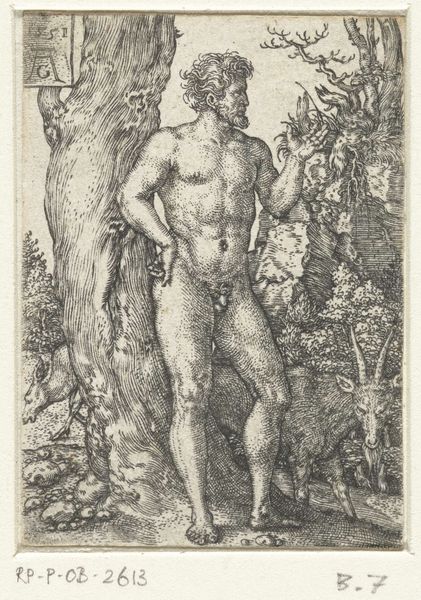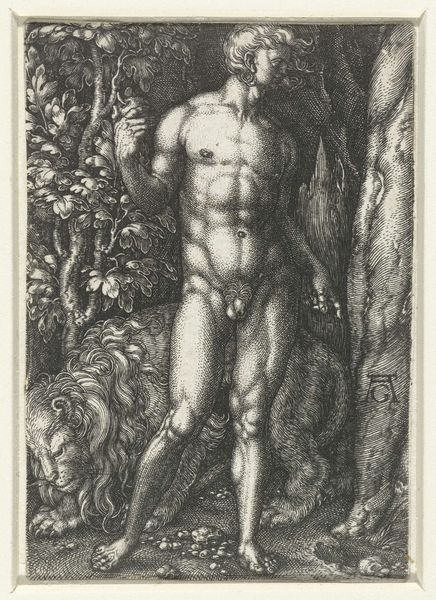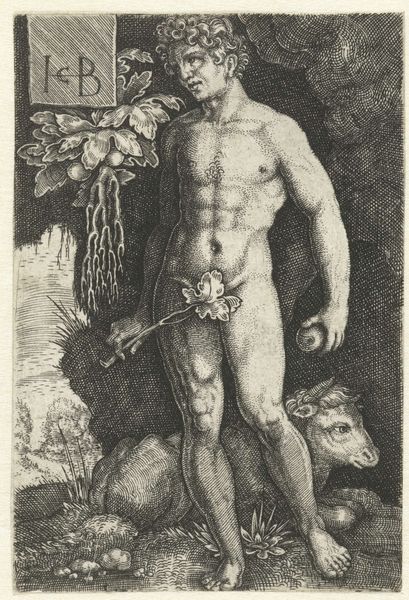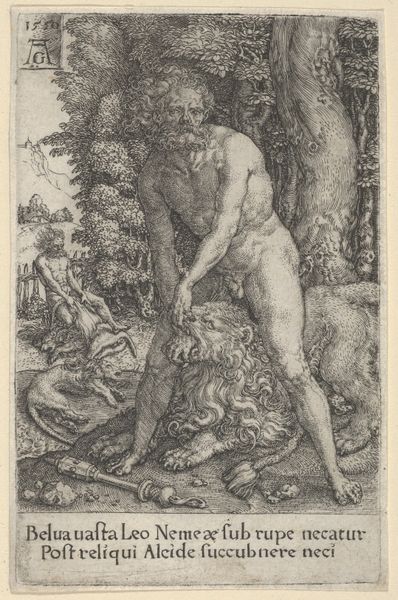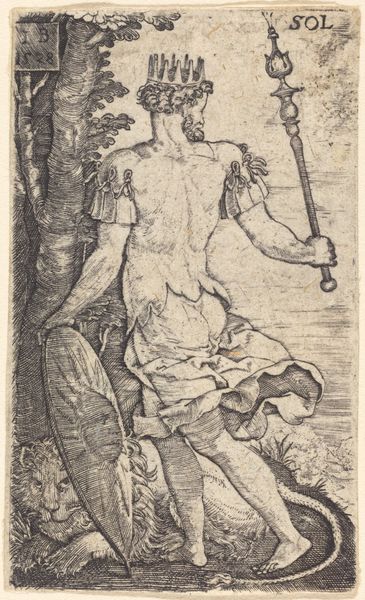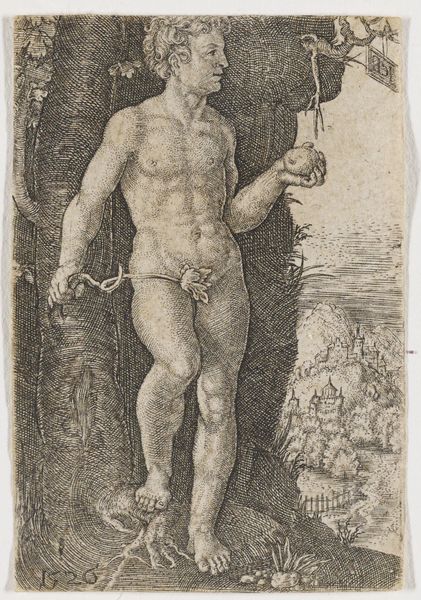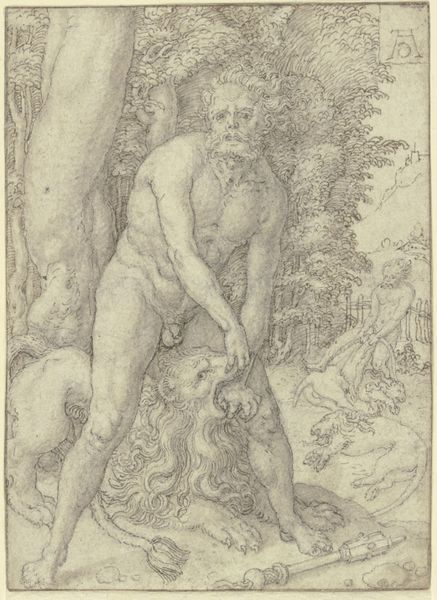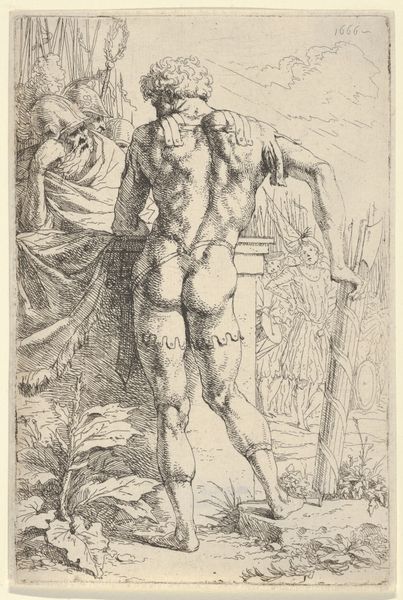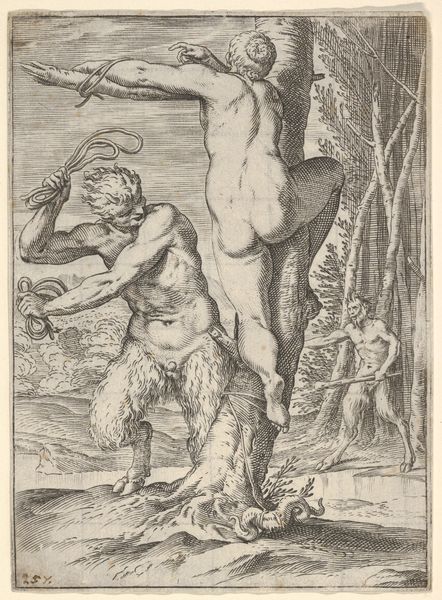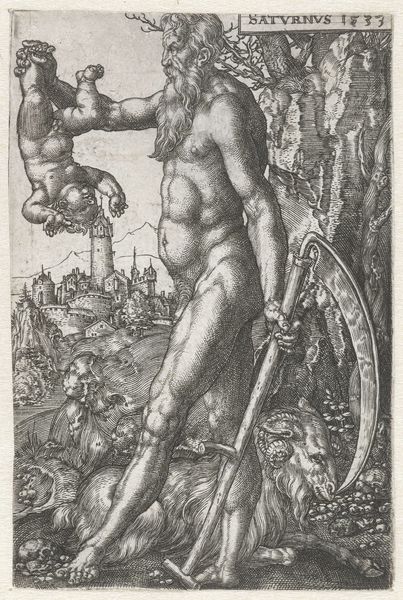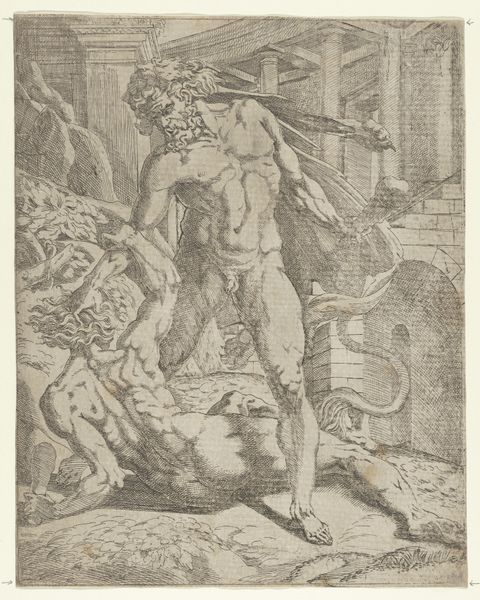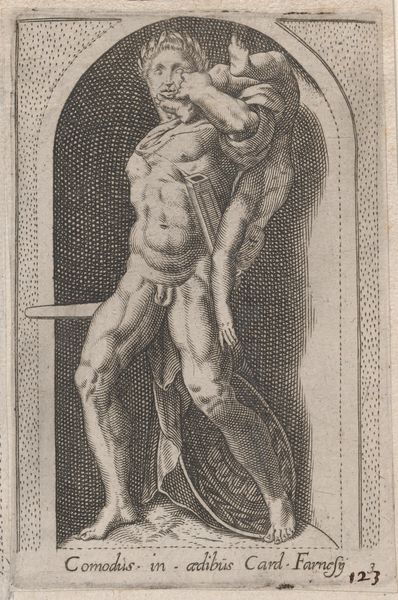
print, engraving
# print
#
landscape
#
figuration
#
11_renaissance
#
line
#
history-painting
#
nude
#
engraving
Dimensions: 7 3/16 x 4 5/8 in. (18.26 x 11.75 cm) (image)
Copyright: Public Domain
Johann Ladenspelder made this engraving of Adam, sometime in the mid-16th century. It's made using a printmaking process that involves cutting lines into a metal plate, inking the plate, and then transferring the image onto paper. The visual impact comes from the contrast between the fine lines and the stark white of the paper. Look closely, and you'll notice how Ladenspelder varies the density and direction of the lines to create a sense of volume and texture. The engraving technique itself has social significance. It emerged in the context of the printing revolution, enabling the mass production of images. This had a democratizing effect, making art more accessible to a wider audience, but also transforming artists into skilled workers within a capitalist system. The intense labor of meticulously engraving each line reflects the changing dynamics of art production during the Renaissance. Ultimately, understanding the processes and materials behind this print helps us see it as more than just an image; it’s a product of its time, shaped by technological advancements and shifting social structures.
Comments
No comments
Be the first to comment and join the conversation on the ultimate creative platform.
